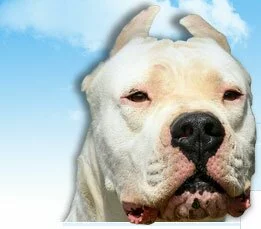 |
 |
|||
|
Copyright Notice: All copyrights are reserved. JT: Do you recognize some specific moments during hunt when novices (hunters and dogs) make the biggest mistakes? Any advices? MF: As all the rest, this is a difficult question for me to answer because I believe the way we hunt is very different from the way people in other countries hunt...and as such, almost every circumstance during the hunt is also different, which will make it difficult to be grasped by foreigners. I have been told that some hunters in the US have no choice but to hunt in small pieces of land; they bay the hog with bay dogs and then release catchdogs which until then had been kept on a leash...this is a completely different type of hunt. We hunt in very large extensions of land...I am speaking of several hundreds of thousands of acres of almost virgin land at our disposal. We do not have feedlots, enclosed boars, or anything of sorts. We might get on our horses and follow the prints of an old boar for 10, 12 hours, even a couple days. Boars are 100% russian and they live freely, as true wildlife. So, the mistakes both humans and dogs can make in this type of environment / hunt are completely different from those a hunting crew moving in a small ranch in, say, Kansas or Oklahoma can make...I doubt my contribution can be useful in that sense. Having said that...it gets more complicated still (I am sorry!). Dogs are not machines (this might sound obvious, but let me get to the point). A given dog will not work the same way in the beginning of the season (early fall; say, mid April) than by the end of it (end of winter, say, August / September). They get better while season progresses, both physically and mentally. They get leaner, "hungrier"; they hone their skills which might have gotten a little rusty during the summer, when there is less activity. In winter, old boars separate from the herd to look for sows to mate....these old boars are more rank and have a stronger smell, which makes them easier to be scented by the dogs, although harder to catch because they are nasty, fierce and dangerous creatures. Weather conditions also change....I could go on and on; I am sorry. To describe the mistakes green dogs make, I need to describe the way a green dog is trained and how it learns...which indeed might be material for other question....but I'll get just a little bit into it, anyway. Green dogs (novices) start learning when they go out in a pack, mixed-up with some veterans. In the learning process, I would say catching is one of the first things a novice dogo learns (after getting familiarized with his new environment, which is a learning process in itself...the vegetation, the animals, the weather, everything). I have gone out with 4-month old dogo pups that weren't able to scent or find a barn by themselves, yet they would run to the fight and catch once the boar was found and secured by the more veteran dogs. During this stage of the process, the 3 main mistakes a juvenile dog can make (that come to my mind right now) are: a) Barking when they should not (basically, barking). A and b will mean a harsh physical punishment from us (specially b); c can imply getting killed very soon in his career. Some juvenile dogs are simply more eager than what their experience and technique can handle. My Atahualpa was that way (and to a certain extent, he still is); one of the first rank boars he caught, he ran full speed and crash head-to-head with it, which is a very brave thing to do, but not very smart. The boar smacked Ata with his head and lifted him in the air (he was 9 months and about 100 pounds by then), splitting his forehead in the middle, a deep cut between the eyes. Ata landed on his butt, shook his head like a boxer who is groggy, and caught again. Great heart, but bad technique, and little brain. Fortunately, after a couple similar hits, he learnt to approach the hogs diagonally, going for the ear or the shoulder. Like I said, catching is one of the first things a novice dogo learns and I like to say that if the human hunter knows what he is doing, he can make almost any dog catch, since the act of fighting and catching is atavistic, is learnt by imitation, and it does not require a great deal of brain maturity. Whether that dog will keep latched after receiving punishment....that's quite another thing, and this is where heart and good breeding start to show....separating boys from men. So my advice for this is always train green dogs in real hunts, but take them out mixed-up with good, solid, reliable veterans. Since the veterans can scent and find (hopefully!), they will reach the boar first, so by the time the pup gets to the catch, the risk of him getting killed diminishes, since the hog is fighting the bigger, more seasoned dogs. If you can get to the catch and the boar is secure -or otherwise a non-dangerous animal, be it because of small size or whatever-, try to re-direct the novice's catch in case it's a bad one...put him on the boar's ear, shoulder or rear leg. Regarding human hunters, the main mistake novices make is excessive eagerness, I think. There are plenty others (Jadranko; you will make me write a book!), but the latter can be the most dangerous. Novices should be taught the differences between a rank, mean boar and a regular juvenile or sow. They should be calm and in case they happen to reach the catch before the experienced hunters (which almost never happens, but anyway), they should assess the situation quickly but calmly. Is it a rank big old boar, or something smaller? Are the dogs in control, or are they getting whacked all over the place? How many dogs are there over the boar, and what is their situation? If the boar is secured, or, like we say down here, being "stretched" by the dogs who are there in a reasonable number, the novice should calmly approach the catch, look for a good opening (preferably in the boar's armpit), not be afraid of pushing to the side the body of a dog that might be acting as an obstacle (he shouldn't be afraid; the dog won't release the hog nor will he bite the hunter), and after finding the right place -kneeling a little bit if necessary to be comfortable- stick the boar with a deep and controlled stab into the armpit, looking for the heart and lungs. A big "swoosh" of blood covering the hunter's hand will testify that the heart has been reached. Remove the knife and see what happens. If in doubt, stab again. Never, but never do it in a hurry; never run with the knife in the hand; knife has to be kept inside the sheath until the catch is reached and the running is stopped (unless the hunter wants to risk falling down and sticking himself). I have seen novice hunters cut themselves in their hands because they fail to stop the run before sticking; it's understandable because adrenalin is flowing, but it should try to be avoided. Lastly, the novice hunter should be very, but VERY careful if the boar in question is a rank old male tusker and is giving the dogs a hard time; that animal needs to be killed fast to protect the dogs but it might be too difficult and too dangerous for a novice -specially if he happens to be by himself- because the boar might have too much freedom of movement and could hurt not only the dogs but also the human hunter. Big old boars can be very dangerous creatures. |
||||
|
|
